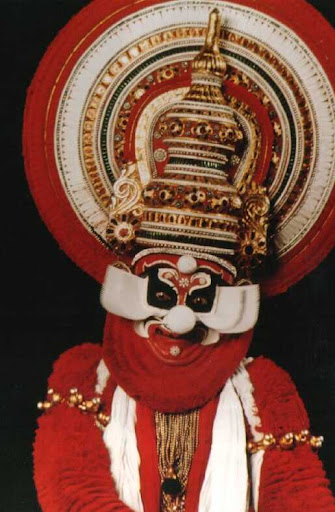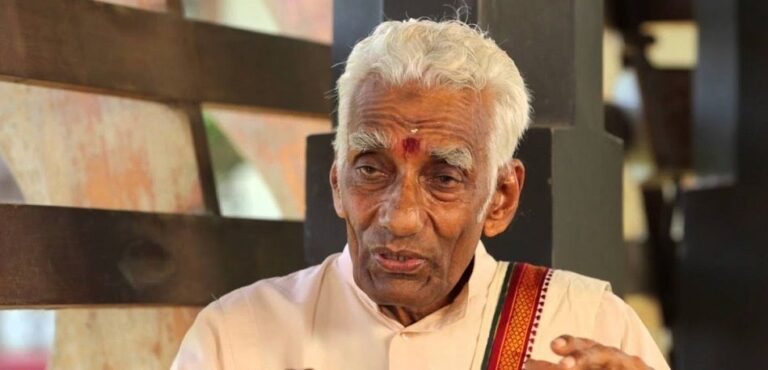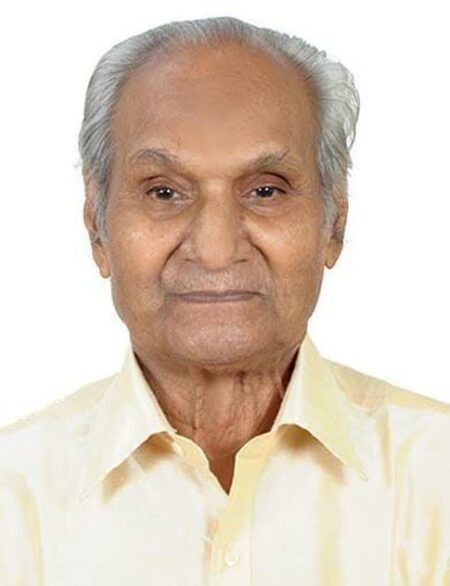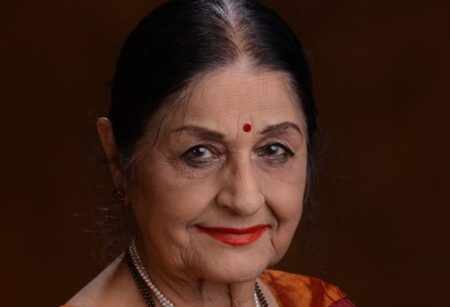Widely acclaimed as one of the most gifted Kathakali artists to perform chuvanna thaadi, Nelliyode Vasudevan Namboodiri’s versatility was unparalleled.
The usual silence prevailing in my flat was broken last night by frenetic phone calls from Kathakali aficionados and media men as news spread about the demise of the veteran Nelliyode Vasudevan Namboodiri. Until confirmation from Thiruvananthapuram, the news seemed a hoax for many.
Born on February 5, 1940, at Cheranellur near Ernakulam Nelliyode had his basic education under his Aunt Sridevi Antharjanam and also Neelakantan Namboodiri. Even as a child his obsession was Kathakali and his dream was admission to Kalamandalam. Though unable to realise this, he was lucky when the veteran guru Vazhenkada Kunju Nair took him under his wings at PSV Natyasangham, Kottakkal in 1957. Nelliyode’s devotion to the art form and his alacrity for hard work compelled his guru to take him to Kalamandalam where he joined on the staff in 1960.
Versatile veshams

What differentiated Nelliyode from his contemporaries was the versatility that enabled him to portray variegated characters with uncanny ease. Be it Trigarthan, Kali, Bali, Sugreevan, Dussasanan, Kirathan, Kuchelan or even the ‘ashaari’ (carpenter), they bore a stamp of the individuality of the maestro. Such dexterity sprang from the engrafted knowledge he had in Sanskrit, the Vedas, Puranas and Tantrikam to which he was initiated as a young boy in the typical Brahmanical tradition. Further, armed with these tools he could analyse the characters’ threadbare. Also painstaking was the homework which was reflected in their presentation.
Even as a member of the ‘minor set’ of Kalamandalam, Nelliyode’s inclination was towards ‘thaadi’ and ‘kari’. Small wonder, he was described as the synonym of ‘Chuvanna thaadi’, especially the Dussassana in Duryodhana Vadham. His physical combat with Bhīma was a spectacular and stirring event. His glances were invariably furious and his gestures emphatic, aggressive and haughty. His dancing was tempestuous and earth-shaking. His cries rolled like thunder and he mocked and sneered a great deal. His laughter was often boisterous and extremely derisive.
Nelliyode’s ashaari can never fade from one’s memory if, at least once one had the privilege of watching that vesham. Incidentally, that role in Bakavadham was a scintillating example of ‘lokadharmi’ (the instinctive) aspect of abhinaya. Not only does humour find expression in extraordinary proportion, but the scene in which he appears before Dharmaputra is perhaps one of the very few occasions in the Kathakali plays that can be enjoyed even by a layman.
Nelliyode has been successful in attributing a totally novel dimension to this role as his advent on the stage becomes noteworthy – armed as he is with his tools carefully packed in a bundle and the traditional yardstick in his hand. The traits of a typical carpenter are further embellished with his glances, movements and peculiar antics on the stage. Even his ‘kalashams’ are novel, spiced with funny but attractive steps. His gestures as he invites Dharmaputra and then Bhīma to examine the worthiness of the entrance to the tunnel he had built so painstakingly, through which they were to escape from arakkillam to the forests, exhibit the esoteric qualities of his abhinaya. In short, the delineation of this rare character is wholesome when portrayed by Nelliyode.
Offstage endeavours
A paradigm of humility, he served as the chief instructor of Kathakali at the Central School, Thiruvananthapuram for two decades from 1975. Thereafter he founded the institute, Vazhenkada Kunchu Nair Smaraka Kala Vihar to perpetuate the memory of his revered guru where he groomed young talents in Kathakali.
Endowed with commendable literary talents, Nelliyode has translated Sreeramodantham, Sreekrishnavilasam and Narayaneeyam. He has to his credit the Kathakali play, Rasakreeda.
Accolades chased him, though belatedly. Kalamandalam Puraskaram (1999), Kerala Sangeetha Nataka Akademi Award (2000), Sangeet Natak Akademi award (2001) and Kathakali Puraskaram of Kerala government were the prominent among them.





1 Comment
Befitting tribute to Nelliyode Asan, an epitome of dignity and scholarship.